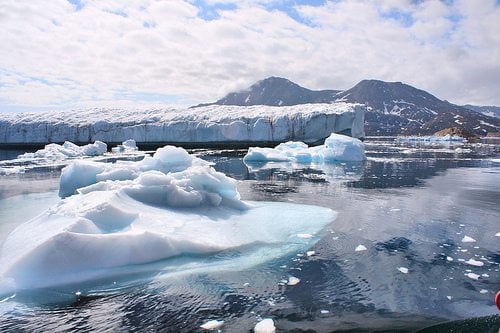

Environment
Huge melt water reservoir discovered under Greenland ice
Scientists have discovered a huge reservoir of liquid water hidden beneath the Greenland ice sheet, which could help them more accurately predict the effects of climate change on rising sea levels.
The aquifer, which covers an area around the same size as Ireland, holds water all year round underneath the frozen landscape.
In a study published in the journal Nature Geoscience on Sunday, researchers from the University of Utah explain how the finding could change our understanding of how snowmelt and ice melt contribute to rising global sea levels.
“Of the current sea level rise, the Greenland Ice Sheet is the largest contributor – and it is melting at record levels”, said Rick Forster, lead author of the study.
“So understanding the aquifer’s capacity to store water from year to year is important because it fills a major gap in the overall equation of melt water runoff and sea levels.”
According to the Intergovernmental Panel on Climate Change, the Greenland ice sheet lost 215 billion tonnes of ice between 2002 and 2011. This process is not yet fully understood, with scientists unaware of where much of the melt water ends up.
The team’s findings show that a significant proportion of it accumulates just below the ice sheet. Forster explained that the water is stored in the air space between ice particles, “like the juice in a snow cone.”
Crucially, however, the scientists say they don’t know where the water goes after leaving the reservoir.
“It depends on whether it is currently connected to a system that is draining into the ocean or if it is a bit isolated and completely acting as a storage source without a current connection”, Forster said.
“We don’t know the answer to this right now. It’s massive, it’s a new system we haven’t seen before – we need to understand it more completely if we are to predict sea level rise.”
The discovery was something of a fluke. In the spring of 2011, the team drilled deep into the partially compacted snow on top of the ice sheet and were shocked to find liquid water flowing back to the surface even though air temperatures were around -15C.
This is not the only surprising secret to have recently been found under the thick Greenland ice. In September, researchers announced the discovery of a canyon at least 750km (466 miles) long, almost twice the length of Arizona’s Grand Canyon.
Researchers from Bristol University, the British Antarctic Survey and NASA found the canyon when using airborne radar to image the landscape.
Around 80% of Greenland is covered by the only ice sheet that exists outside of Antarctica. If the sheet were to melt completely, scientists estimate that global sea levels would rise by more than 7 metres. Even a partial melting could have disastrous consequences for low-lying countries like Bangladesh and the Maldives.
In July Greenland experienced its highest temperatures since records began, when temperatures of 25.9C (78.6F), were measured at Maniitoq Mittarfia near Baffin Bay on the west coast.
Scientists have previously calculated that if the annual average temperature in Greenland increases by 3C (5.4F), its ice sheet will begin to melt at an abnormal and potentially catastrophic rate.
Further reading:
Huge canyon discovered under Greenland ice
Climate change may ‘green’ Greenland by 2100, say scientists
‘Unprecedented’ warmth of Arctic in 2012 saw ice melt to record low


 Environment9 months ago
Environment9 months agoAre Polymer Banknotes: an Eco-Friendly Trend or a Groundswell?

 Environment11 months ago
Environment11 months agoEco-Friendly Home Improvements: Top 7 Upgrades for 2025

 Energy12 months ago
Energy12 months agoA Closer Look at The Rapid Growth of Solar Energy in Ireland

 Features8 months ago
Features8 months agoEco-Friendly Cryptocurrencies: Sustainable Investment Choices




























